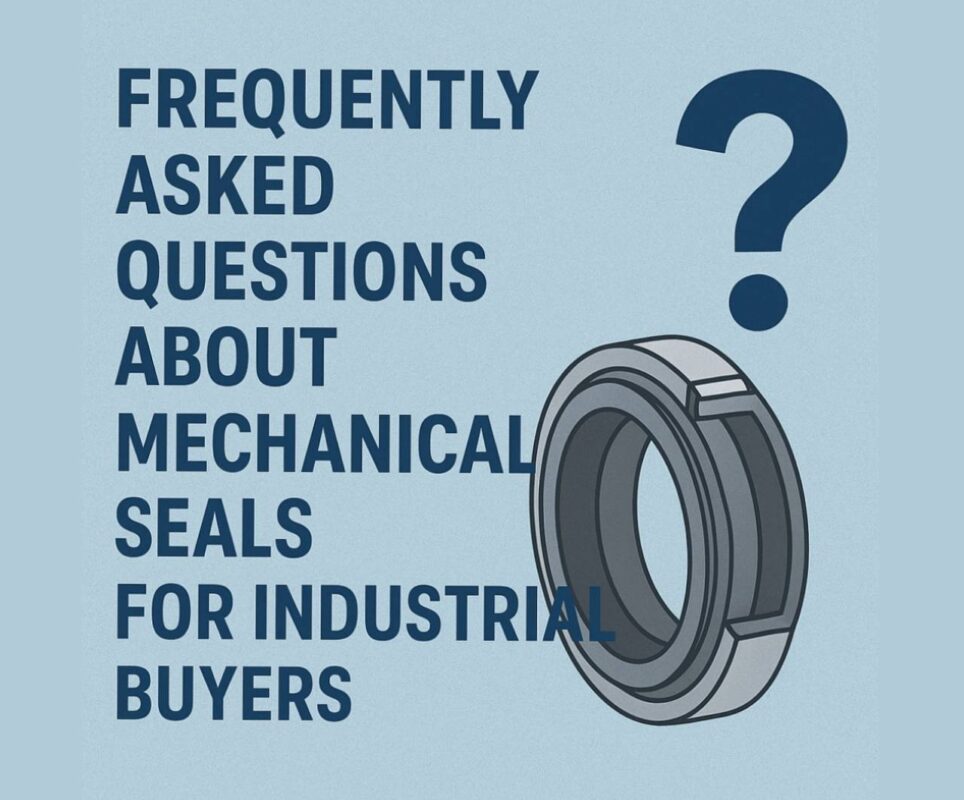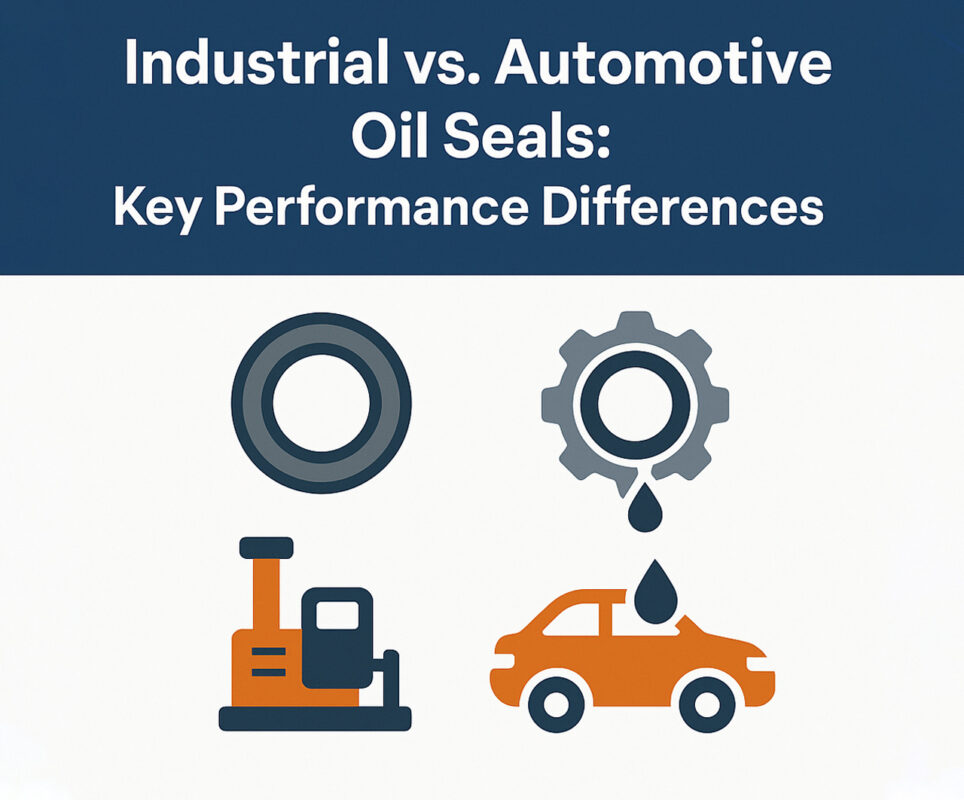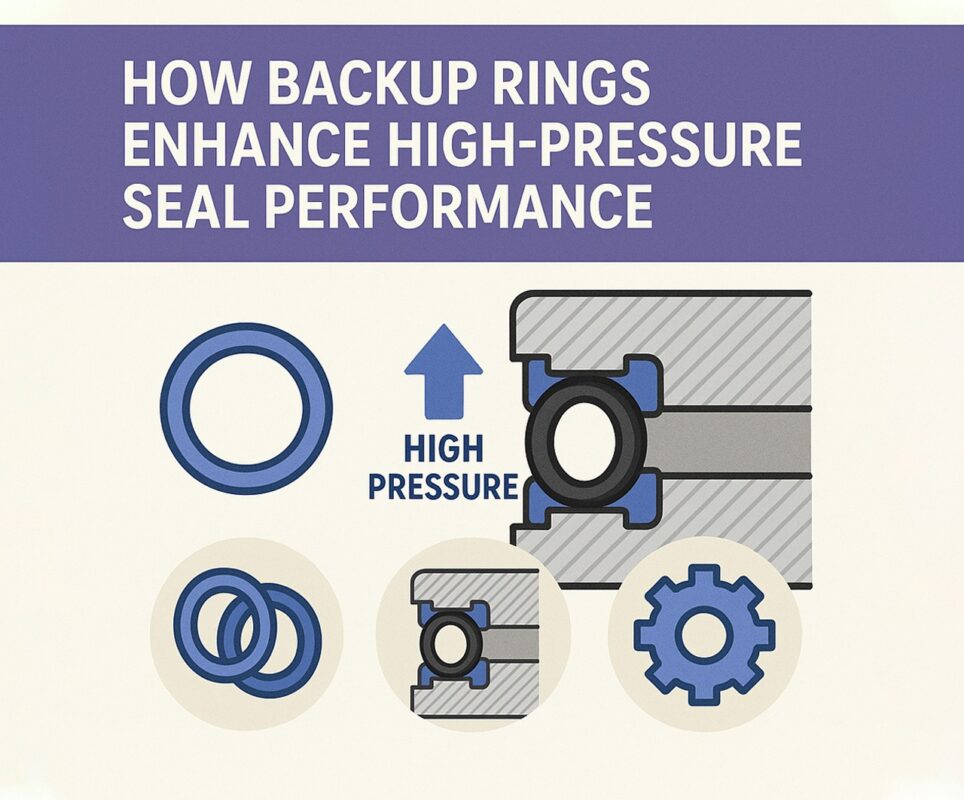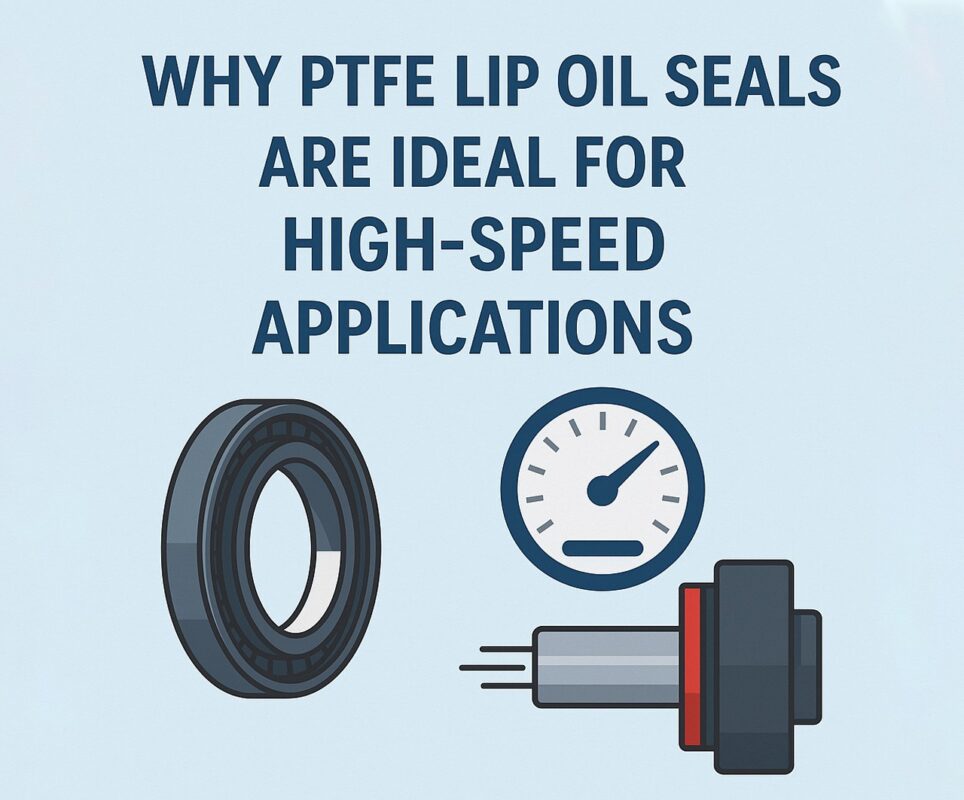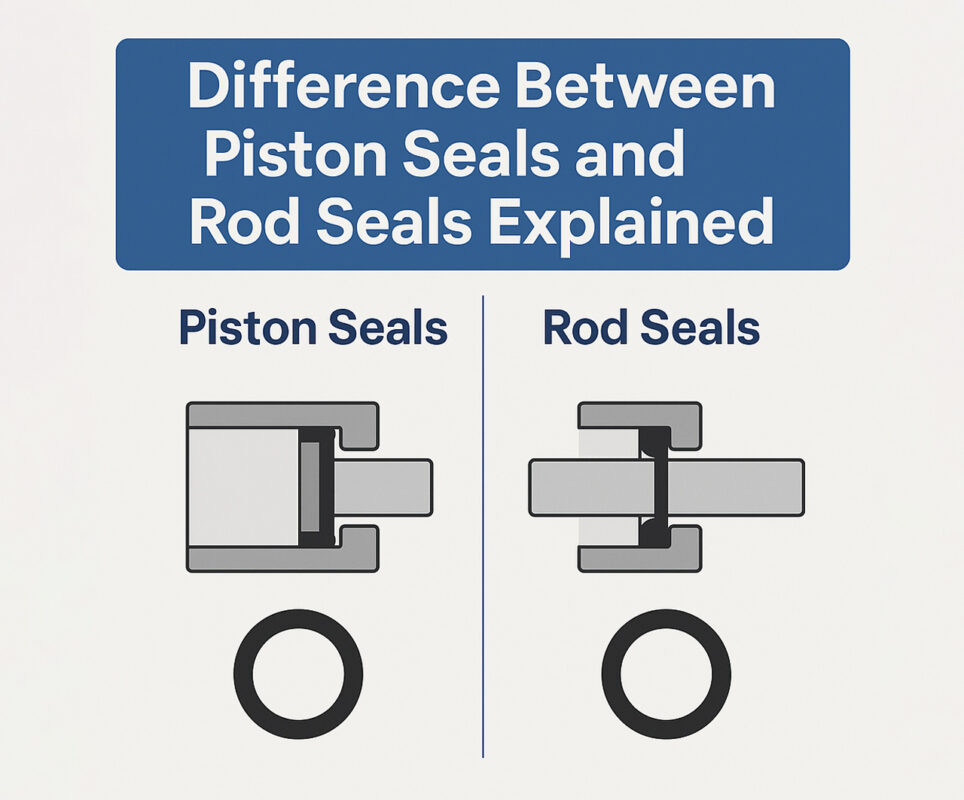In the world of high-performance machinery, the demand for reliable sealing systems is non-negotiable. Whether you’re maintaining valve stem oil seals, working with engine oil seals, or installing oil seals in heavy-duty hydraulic systems, the importance of material selection and seal design becomes clear. Among the most effective options for high-load and high-pressure environments are fabric-reinforced MG oil seals. These seals combine the resilience of elastomers with the strength of fiber reinforcement, making them uniquely suited for applications where standard rubber seals just can’t keep up.
This article dives into how Fabric-MG oil seals are engineered, why they’re critical in demanding scenarios, and what sets them apart from conventional sealing solutions. Know more..
What Are Fabric-MG Oil Seals?
Fabric-MG oil seals (often referred to as fabric-reinforced or fabric-reinforced rubber seals) are a type of rotary shaft seal enhanced with fabric layers—typically cotton or synthetic fibers—embedded within the elastomer base. This hybrid structure is designed to withstand higher mechanical loads, increased surface pressure, and dynamic operating conditions.
They’re commonly used in systems where:
- Valve stem oil seals must maintain integrity under thermal cycling.
- Engine oil seals endure prolonged exposure to heat, vibration, and aggressive fluids.
- Installing oil seals in environments with shaft deflection or misalignment is standard.
The Core Benefits of Fabric Reinforcement
What makes these seals stand out?
- Superior Pressure Handling Fabric-MG seals can manage pressures beyond the range of standard elastomer seals, often up to 10 bar in rotary systems. This is crucial in hydraulic systems and turbocharged engines.
- Increased Dimensional Stability The embedded fabric provides a rigid backbone, maintaining seal geometry under compression and rotational forces. This is especially beneficial in installing oil seals into older or worn housings where perfect alignment is a challenge.
- Improved Wear Resistance The fiber-reinforced surface enhances abrasion resistance. This extends the life of engine oil seals in crankshaft and camshaft positions, where metal-to-seal contact is continuous.
- Heat and Chemical Resistance When paired with high-grade elastomers like FKM or NBR, fabric-MG seals resist breakdown under extreme heat and oil exposure.
Fabric-MG vs. Conventional Oil Seals
| Feature | Fabric-MG Oil Seal | Standard Oil Seal |
| Load Handling | High | Moderate |
| Wear Resistance | Superior | Average |
| Pressure Tolerance | Up to 10 bar | Up to 3 bar |
| Installation Sensitivity | More forgiving | Requires precise fit |
| Cost | Slightly higher | Lower |
| Ideal Applications | High-load, industrial | Light to medium-duty |
For systems like valve stem oil seals in heavy-duty engines or engine oil seals in high-RPM motors, the extra cost of fabric reinforcement is easily justified by performance gains.
Key Materials Used in Fabric-MG Seals
- Base Elastomers
- Nitrile (NBR): Good oil resistance and flexibility.
- Fluoroelastomer (FKM): High temperature and chemical resistance.
- Silicone: For low-friction and temperature-sensitive applications.
- Fabric Types
- Cotton fabric: Traditional choice with good bonding properties.
- Aramid (Kevlar): For high-strength, abrasion-prone applications.
- Polyester or Rayon: Enhanced chemical resistance.
- Metal Inserts For structural integrity, many Fabric-MG oil seals include metal cases or spring-loaded lips to ensure proper contact and long-term sealing force.
Application Areas for Fabric-MG Oil Seals
1. Heavy-Duty Diesel Engines
In these engines, valve stem oil seals must control oil flow into the combustion chamber without cracking or deforming under heat. Fabric-MG designs provide better resilience and maintain sealing under dynamic valve movement.
2. Industrial Gearboxes
The gear shafts operate under heavy torque. Fabric-MG engine oil seals used here reduce wear and improve oil retention, even in contaminated environments.
3. Agricultural Equipment
Dust, vibration, and inconsistent loading wreak havoc on seals. Fabric-MG seals are more forgiving when installing oil seals in rough conditions.
4. Mining Machinery
Where shaft misalignment and debris exposure are daily concerns, fabric reinforcement provides superior durability and sealing consistency.
Installation Best Practices
Even the most advanced engine oil seals will fail without proper installation. Here’s how to get it right with Fabric-MG options:
- Inspect Shaft Surface Ensure smoothness and proper hardness (30-45 HRC recommended). Use a sleeve if surface wear is present.
- Use Correct Tools Don’t hammer the seal into place. Use a press or seal driver to apply even force.
- Lubricate Properly Lightly oil the lip and shaft to avoid dry startup. Be cautious not to over-lubricate.
- Align Precisely Especially when installing oil seals in older equipment, ensure concentricity to avoid early failure.
- Avoid Overheating During Installation Don’t expose the seal to open flame or overheating with blowtorches. This can compromise the fabric integrity.
Common Failure Modes and How Fabric-MG Seals Prevent Them
| Failure Mode | Standard Seal Risk | Fabric-MG Advantage |
| Lip extrusion | High under pressure | Reinforced structure resists it |
| Shaft scoring | Likely if dry or misaligned | Fabric surface reduces friction |
| Thermal hardening | Common in engine seals | FKM-fabric combo resists heat |
| Misalignment damage | Seal distortion | Maintains shape under stress |
| Abrasive wear | Rapid edge erosion | Fabric resists abrasive media |
Fabric reinforcement effectively addresses the most common reasons valve stem oil seals and engine oil seals fail.
Innovations in Fabric-MG Seal Design
Seal technology continues to evolve, with modern developments improving both performance and usability:
- Integrated Sensing Technology Sensors embedded within the seal structure monitor wear, pressure, and temperature in real time.
- Advanced Coatings Low-friction coatings on fabric layers reduce energy consumption and startup torque.
- Biodegradable Elastomers Eco-friendly compounds that maintain performance while supporting sustainability initiatives.
- Self-lubricating Materials New polymers infused in fabric layers reduce the need for external lubricants.
Selecting the Right Fabric-MG Oil Seal
When specifying a seal, ask:
- What is the operating pressure and RPM?
- What kind of fluid is being sealed (oil, grease, slurry)?
- Are there contaminants like dirt or chemicals?
- What are the temperature extremes?
- Is the system subject to frequent shock loads or vibration?
Work with trusted manufacturers who can tailor materials and design to your specific needs. Customization is often minimal in cost but major in performance gains.
Case Study: Fabric-MG Seal in Heavy Equipment Crankshaft
A mining company was experiencing premature failures of engine oil seals on their fleet’s crankshafts. Upon analysis, the cause was high-pressure spikes and abrasive contaminants entering the seal lip area.
Solution:
- Replaced standard nitrile seals with Fabric-MG oil seals made with FKM and aramid fiber.
- Upgraded installation process to include protective sleeves and dust guards.
Results:
- Seal lifespan extended from 3 months to 18 months
- Zero reported shaft scoring incidents
- Maintenance intervals significantly reduced
Final Thoughts: Sealing Power Meets Reinforced Strength
Fabric-MG oil seals bridge the gap between conventional rubber seals and high-tech sealing solutions. For operations that push mechanical systems to their limits, whether managing valve stem oil seals, protecting engine oil seals, or meticulously installing oil seals, this reinforced option delivers resilience, consistency, and peace of mind.
In high-load applications, the cost of failure is high. Choosing a seal built for pressure, wear, and real-world rigors isn’t just smart—it’s essential.
